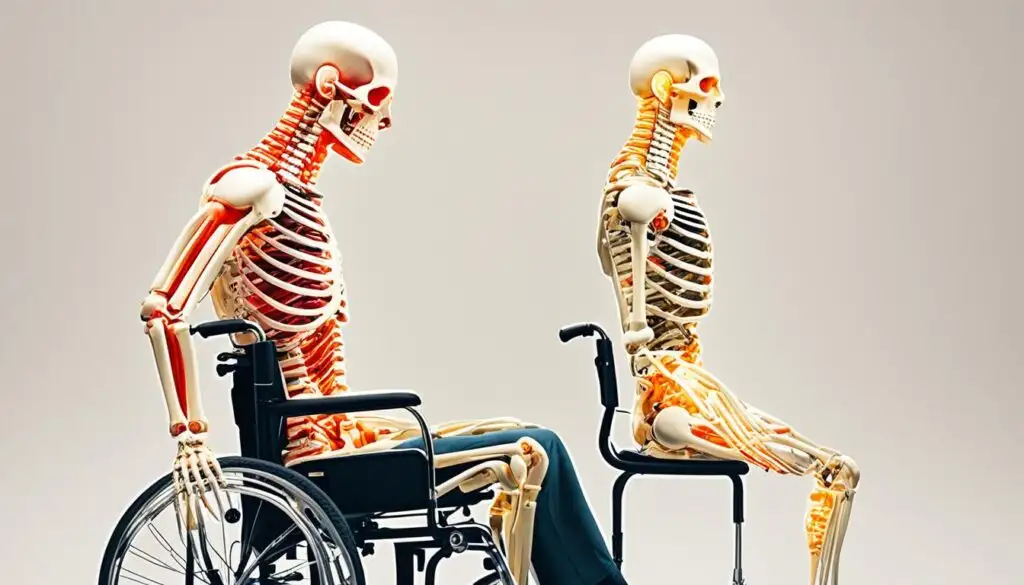Living with partial paralysis can be a life-altering experience, requiring significant adjustments in daily activities and lifestyle. However, with the right strategies and support, individuals with partial paralysis can lead fulfilling lives. This blog will offer practical advice for managing the condition, coping with its challenges, and embracing a proactive approach to daily living.
Understanding Partial Paralysis
Partial paralysis occurs when muscle function is lost in part of the body, typically as a result of nerve damage. This condition can vary in severity, affecting one or more limbs and possibly other parts of the body. Causes include traumatic injuries, neurological diseases, and conditions like Brown-Séquard Syndrome, which is characterized by paralysis on one side of the body and sensory loss on the opposite side.
Symptoms of Brown-Séquard Syndrome
Brown-Séquard Syndrome provides a specific example of partial paralysis following spinal cord injury. According to Dr. Chandril Chugh, symptoms include:
- Ipsilateral Muscle Weakness or Paralysis: This occurs on the same side as the spinal injury.
- Contralateral Loss of Pain and Temperature Sensation: Sensation loss occurs on the opposite side of the body from the injury.
- Ipsilateral Loss of Proprioception: This affects one’s ability to perceive body position and movement.
- Bladder and Bowel Dysfunction: These symptoms can complicate daily living and require specific management strategies.
Coping Strategies for Living with Partial Paralysis
Adapting to life with partial paralysis involves both physical and psychological adjustments. Here are some effective strategies to help manage the condition:
Physical Therapy and Rehabilitation
Engaging in regular physical therapy is crucial for maintaining and enhancing muscle strength and flexibility. Rehabilitation can help maximize mobility and teach adaptive techniques for managing daily tasks.
- Tailored Exercise Programs: Work with a physical therapist to develop exercises that target specific muscles and functions affected by paralysis.
- Regular Assessment: Continual evaluation ensures that therapy programs evolve with your needs, promoting the best possible function.
Use of Assistive Devices
A variety of assistive devices can enhance independence and mobility for those living with partial paralysis.
- Mobility Aids: Wheelchairs, scooters, and walkers can aid movement, especially for those with lower limb paralysis.
- Adaptive Equipment: Specialized tools for dressing, cooking, and personal care can help maintain independence in daily activities.
Home Modifications
Modifying your living environment can significantly enhance safety and functionality at home.
- Accessibility: Install ramps, grab bars, and stairlifts to navigate your home more easily.
- Adaptive Furniture: Use adaptive furniture such as adjustable beds and chairs that support posture and comfort.
Pain Management
Chronic pain is a common issue for individuals with partial paralysis. Effective pain management strategies include:
- Medication: Consult with healthcare providers to use medications that can effectively manage pain without significant side effects.
- Alternative Therapies: Techniques such as acupuncture, massage, and biofeedback can help alleviate pain and improve overall well-being.
Psychological Support
Living with partial paralysis can be emotionally challenging. Psychological support is vital for addressing mental health aspects.
- Counseling: Professional counselors or psychologists can provide strategies to cope with the emotional challenges of living with paralysis.
- Support Groups: Connecting with others who face similar challenges can provide encouragement, advice, and camaraderie.
Lifestyle Tips for Managing Partial Paralysis
Beyond immediate coping strategies, long-term lifestyle adjustments are essential for living well with partial paralysis.
Nutrition and Diet
- Balanced Diet: Maintain a nutritious diet to support overall health and manage weight, which is crucial to avoid putting extra stress on the body.
- Hydration: Adequate hydration is essential, particularly for those who may have bladder management issues.
Social Engagement
- Community Involvement: Stay active in the community through clubs, groups, or volunteering to keep social connections strong and enhance mental health.
- Hobbies and Interests: Engage in hobbies that are adaptable to your abilities to keep life fulfilling and enjoyable.
Continuous Learning
- Education: Stay informed about new treatments and technologies that can improve mobility, reduce pain, or enhance quality of life.
- Skill Development: Learn new skills that accommodate your abilities, whether for hobby or work, to keep your mind active and engaged.
Resources and Support
Knowing where to find reliable information and support is crucial for managing partial paralysis effectively.
- Healthcare Professionals: Regular consultations with your healthcare team—including doctors, therapists, and specialists—are essential.
- Online Resources: Websites, forums, and online communities can offer advice, experiences, and support from others living with similar conditions.
Conclusion
Living with partial paralysis involves facing many challenges, but with the right strategies and support, it is possible to lead a fulfilling life. By engaging in rehabilitation, utilizing assistive technologies, modifying living spaces, and seeking emotional support, individuals can adapt and thrive despite their limitations. Understanding and managing conditions like Brown-Séquard Syndrome within this context not only improves quality of life but also empowers individuals to take an active role in their care and wellness. As research and technology advance, the potential for improved treatments continues to grow, offering hope for even better management of partial paralysis in the future.

